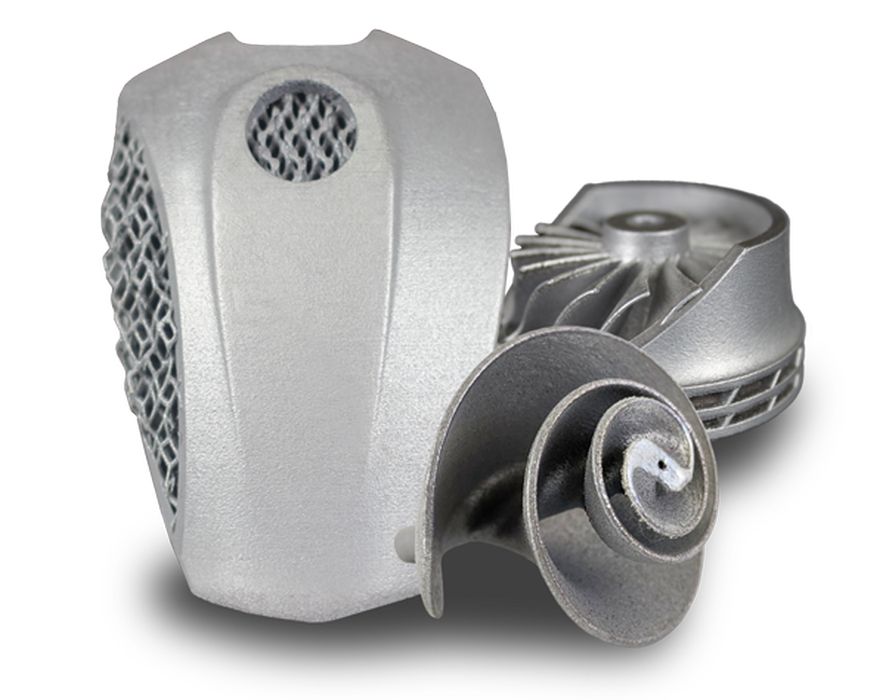
Several new AM materials were announced in the past week.
We often receive notes from manufacturers that have developed new and unique materials, but most times the news value is relatively low and these do not warrant a story on their own. However, we thought we might bundle together several material announcements into one post, this one, for your review.
Filaments.ca REGEN

Filaments.ca announced a new line of bioplastic compostable 3D printer materials made from REGEN, a PHA material sourced from BOSK Bioproducts.
Filaments.ca explains:
“This Canadian made PHA compound is a sustainable alternative to conventional plastic. It contains no fossil-based or toxic chemical additives. Compared to the commonly used PLA, REGEN™ filaments are less brittle, are stronger with a smoother matte finish, display higher heat deflection temperatures, and biodegrade faster.”
The non-toxic REGEN material is now available in several colors, including “wood”, on 750g spools.
Tekna and Uniformity Labs Sign Agreement

A deal between Tekna and Uniformity will ensure Tekna can provide their Ti64 5/25 and Ti64 45/105 materials to Uniformity for production of “highly advanced titanium powders” suitable for use in PBF metal 3D printers. They explain:
“The collaboration enables Tekna to optimize the use of its production yield which Uniformity will process to produce its advanced titanium powder for LPBF. Uniformity’s technology helps customers realize substantial quality and efficiency improvements in additive and conventional manufacturing at scale. Their engineered powders and processes enable faster production of repeatable parts at higher density with no compromise in quality. Tekna powder atomization technology uses hydro-energy, and all process gasses are recycled in closed loops, achieving greener production. Together the companies will help industrial customers produce greener, more sustainable parts.”
Wematter’s Electrically Conductive Graphene Material
Wematter partnered with Graphmatech, a startup focusing on enhancing polymers with graphene additives, to produce a high performance SLS 3D printing powder for their equipment. The material leverages the graphene additives to generate conductive properties.
They say this is the first time graphene has been used in an SLS system.
Stratasys Announces Radiopaque Material
Stratasys introduced “RadioMatrix”, a very unusual material for their PolyJet family. The material is opaque to radio frequencies, meaning it blocks certain types of radiation.
Why produce this material? It falls directly into Stratasys’ expanding medical printing solutions set, where anatomical models are 3D printed. Initially, these anatomical models were fully colored, but later Stratasys introduced clear materials so you could “see inside” the tissue structures. Then most recently they introduced a flexible material that can reproduce a lifelike “feel” when touching the 3D prints.
Now RadioMatrix takes that a step further and allows the reproduction of bones within an anatomical model, bones that can be X-rayed just like normal bones. The image at top shows how this can be done. The new RadioMatrix material can be controlled precisely, making it possible to produce all manner of radio opaque tissue reproductions.
3D Systems Partnership

3D Systems announced a partnership with EMS-GRILTECH to produce advanced polymer 3D print materials. The first material produced under the partnership is DuraForm PAx Natural, a polyamide powder for SLS systems. They explain:
“DuraForm PAx Natural possesses very impressive long-term stability ratings of over five years indoor for mechanical properties and color. When parts are post-processed using vapor-honing, finished parts have excellent translucency and smooth finish which enhances the breadth of applications for which this material can be used. In addition, the vapor-honed DuraForm PAx Natural material moves the elongation at yield capability past that of PA-11 and PA-12 materials. This material also has high reuse rates (a 30% refresh rate is recommended) which helps reduce waste and decrease production costs.”

